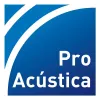The mission of LEED, as outlined in the Strategic Plan, is to ensure that buildings create spaces that promote human and environmental well-being. This includes designing healthier and safer environments for building occupants. Therefore, we believe the acoustic requirements shall be reconsidered in the new version 5 of LEED, aligning them more closely with the mission.
According to the WHO (World Health Organization), noise pollution is a significant public health issue. In the short term, it can cause high levels of stress, and in the long term, it can lead to hearing loss. It is important to note that acoustics is a major source of complaints in offices, hospitals, schools, and other buildings. Therefore, acoustic requirements are essential to ensure that buildings truly promote healthy spaces, which is the core aim of LEED.
While seemingly flexible, offering a choice between achieving the requirements for the Sound Environment or the Thermal Environment does not ensure a genuinely healthy space. This approach, in fact, represents a step down in the rating of occupancy quality. It is crucial to recognize that the technical requirements for thermal studies cannot be replaced by acoustic and vice versa, as they are complementary and not interchangeable.
Furthermore, the evaluation of LEED-certified buildings requires objective acoustic parameters. What will these parameters be? What are the criteria set for acoustics? Without any objective parameters, the design and audit stages are left to the interpretation and knowledge of each designer and assessor. While suppressing or reducing acoustic criteria can be interpreted as giving the parameter decision to the skilled acoustical consultant, having no objective requirements potentially opens never-ending discussions about reaching or not LEED rating. Afterall, LEED is an important tool to drive project decisions.
That said, Proacustica emphatically opposes the downgrade in the acoustics section v5 compared to v4. Preferably, LEED should improve the acoustics metrics; if this is not feasible due to the time frame, at least maintain the criteria set described in v4.
Proacustica is a professional association from Brazil with more than 100 affiliates, ranging from consultants to manufacturers.

